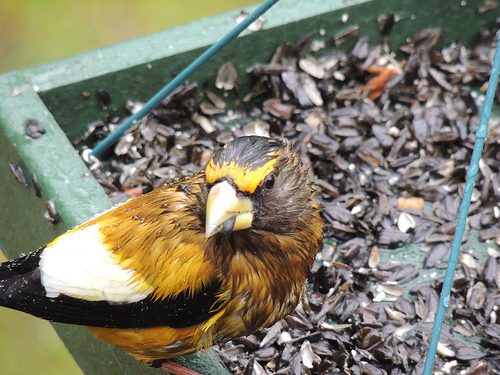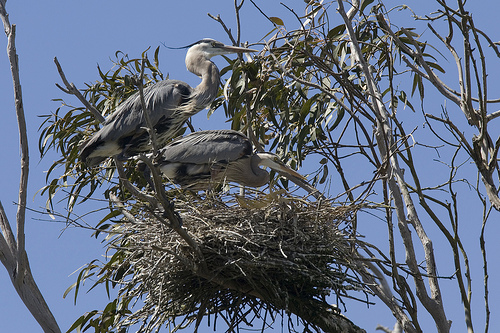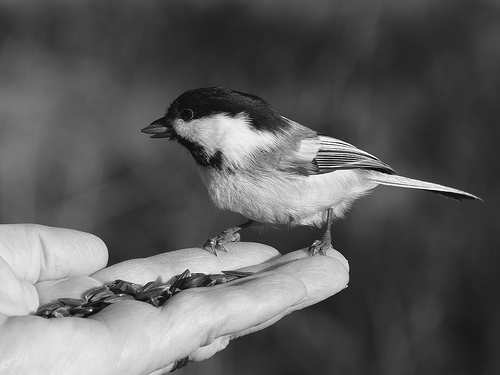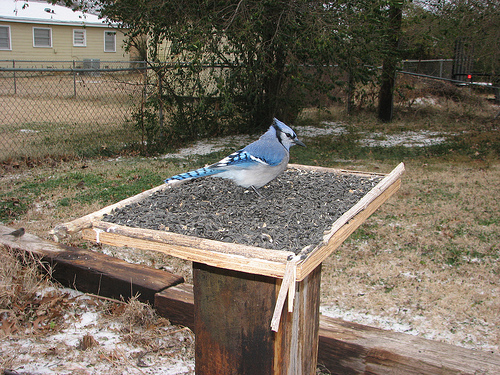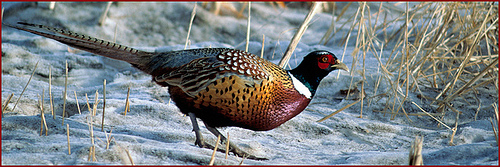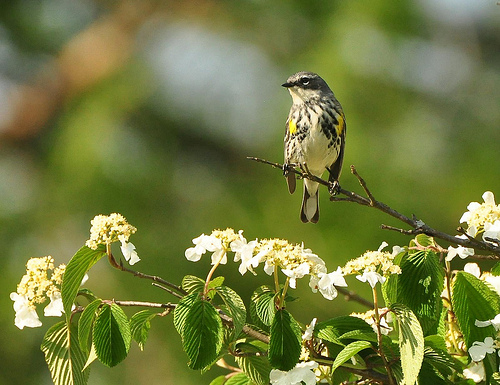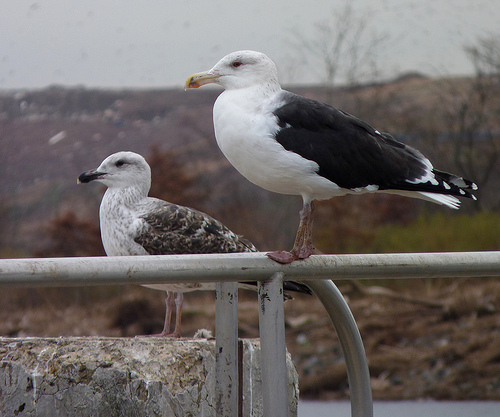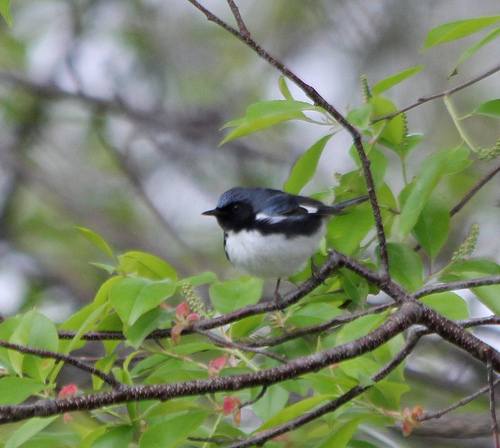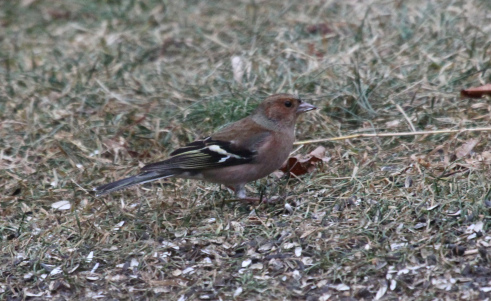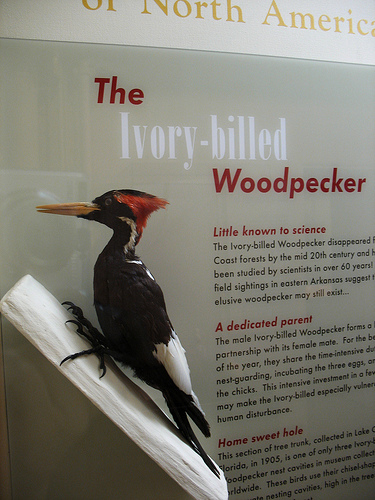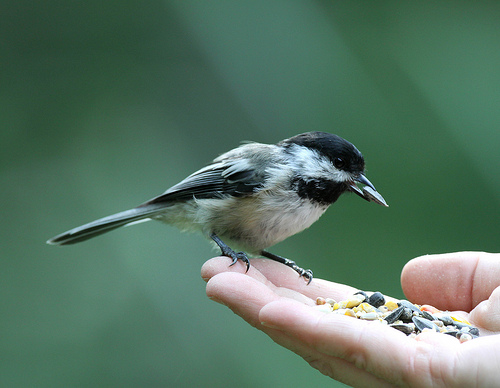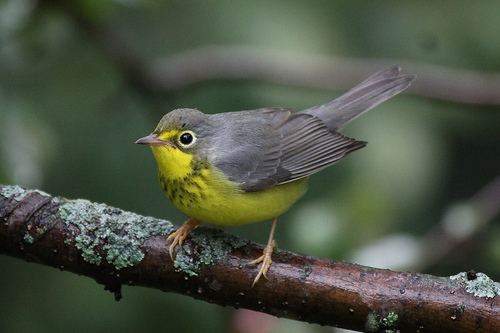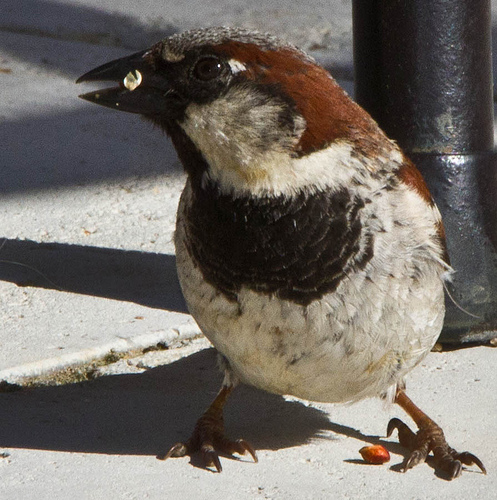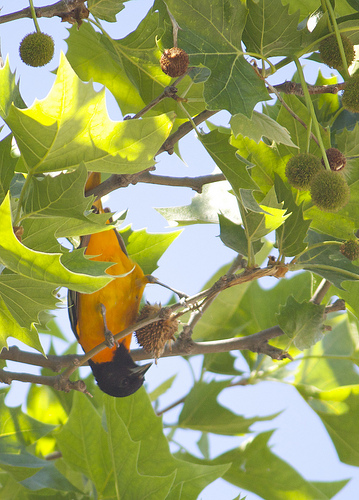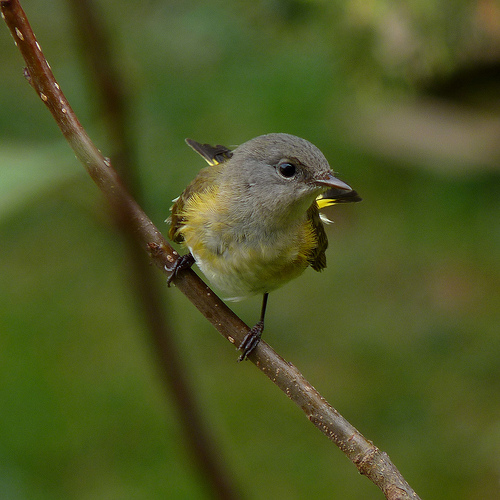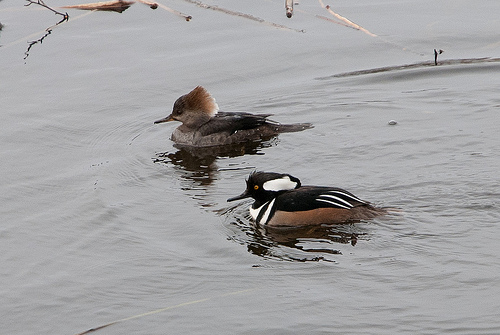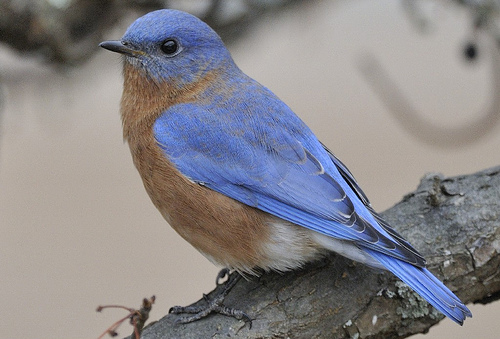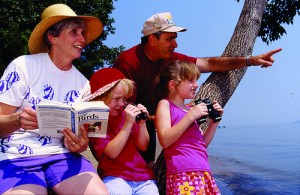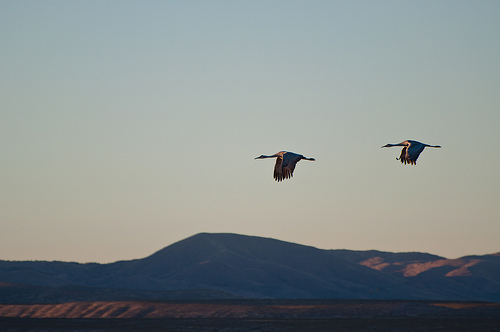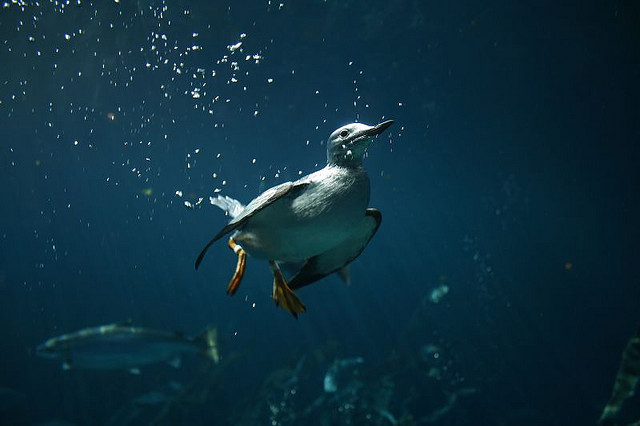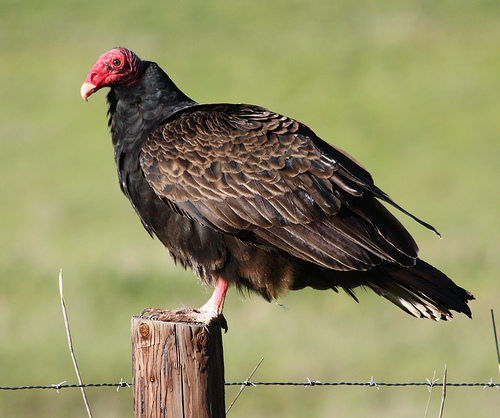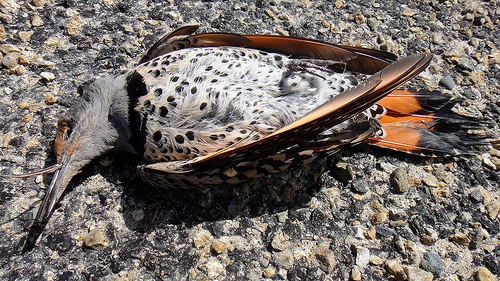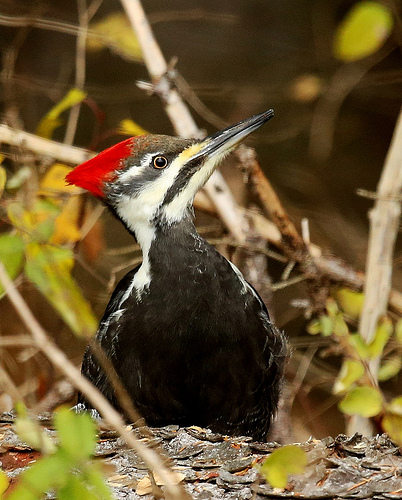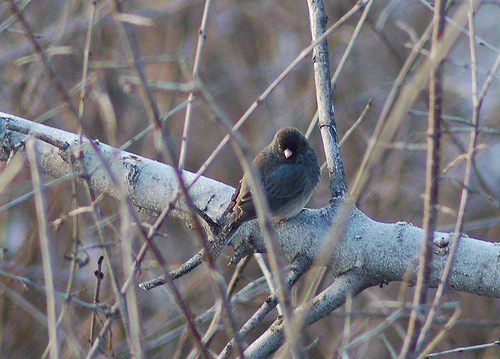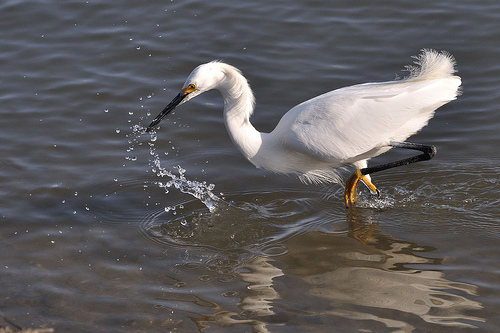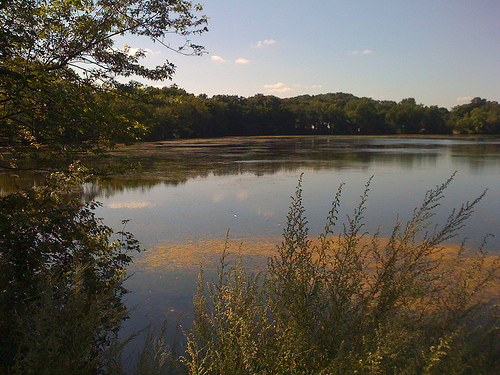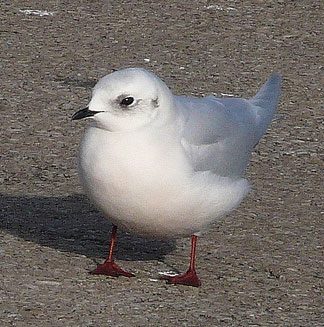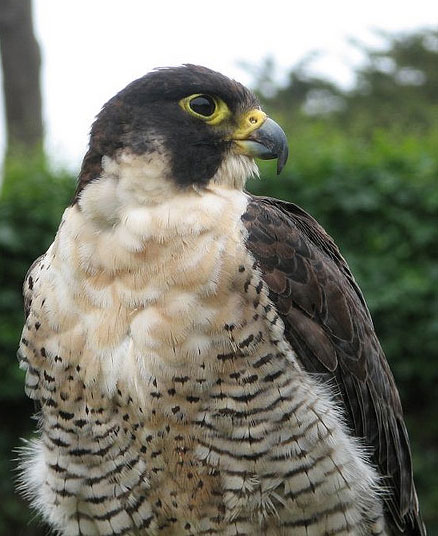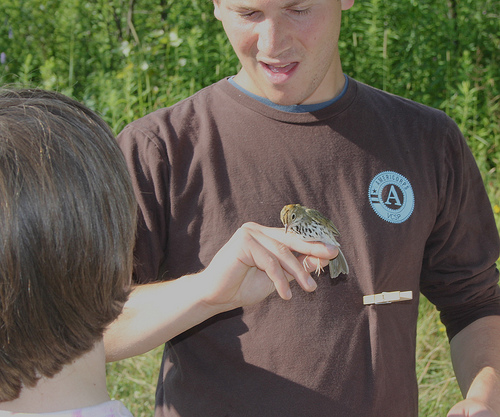Here are some more posts from MASSBIRD describing birding “sparks.”
Matt began noticing birds early:
I’m not sure I actually have a spark; when I was 2 weeks old my mother’s journal contains a line “Birds and airplanes catch his attention more than anything else, he’s fascinated by them.” The airplane thing never took off .. I took my first flight earlier this year at the ripe old age of 30. The bird portion of that never faltered though.
Evening Grosbeaks were the first birds to catch Matt’s attention and also (below), Scott’s. photo by aurospio
My most vivid early memory of birds though was the Evening Grosbeaks that would visit a feeder we had attached to a window of our apartment, around the time I was 4. I’d get up early in the morning and the sun shining would cast the shadows of the Grosbeaks against the shade that was still closed. I would always peer around it, and they were so tame. Even with the shade up you could sit on the couch right in front of the window just inches away from these big boisterous yellow birds. I didn’t know they were an irruptive species at the time, they were so frequent in the first few winters of my life. I used to sit there for hours watching them feed on the plank of wood we had attached to the outside windowsill. I still remember the feeling of the window’s old pane of glass pressed up against my nose as I tried to get as close as I could to the birds.
Scott describes his “spark bird” and adds a thoughtful thank you:
My spark was the dreams of wanting to see an Ivory-billed Woodpecker in 1979. I started looking thru many bird magazines and books fascinated with this bird. That winter I had the best show of Evening Grosbeaks, dozens of them on my 2nd story platform bird feeders. Hooked!
However, if it weren’t for the wonderful guidance and friendship from Rodney Jenkins, who picked me up many a Sunday, I may not have continued birding. Rodney and I went on so many adventures and he really showed me how to find birds by truly shaking the bushes or rattling the trees so to speak, in search of the common species, and the elusive ones.
Scott has great memories of a large heron rookery in Phillipston. photo by mikebaird
One of my fondest memories is the day we found the Great Blue Heron Colony in Phillipston. We drove over this old road & that one, and into the deep woods of Phillipston in the area of the underground cable/electric lines. We were finally rewarded with 43 active nest out in a swamp near an old summer camp, it was so exciting! I also remember Rodney showing me my life Black-throated Blue Warbler near the heron Colony, of which I can still see that bird to this day.
Thank you Rodney
And we’ll end this series of post with a wrap-up by the birder who got it started, Gerry Cooperman:
To all who posted their spark tales I thank you for sharing part of your life with all of us. The stories were moving and poignant. You all contributed in making Massbird more than simply a sighting report. You have given Massbird a new voice. A voice not heard before and what you do now to make that voice stronger will define who we are. But more importantly it will pass on our stories to a new generation. As we were given the spark along the birding way we were also given lessons. Lessons that would mold us in action and deeds. It is not just about the birds. Pete Dunne stated in one of his books that if you are a dedicated birder and don’t write about it you are depriving many of something very special. The stories keep generating the sparks. Do not deprive anyone.
My spark that was started in July of 1970 was a mere ember. Slowly gaining strength over time as experience and education began to slowly fan that smoldering ember until it grew into a flame. A flame that would define my life as an individual. In life as you mature there are significant moments. Lesson moments , if you will, that will define your character and how you appreciate all the people and moments. It’s not always just about the birds but sometimes we are so focused on that that we lose sight of all that is important around us. We get caught up in the moment. Hubris becomes our friend and that makes us someone different. The lessons learned are really moments of awareness. They become the building blocks of our character.
Allow me to share with you one of these memorable moments. A moment that taught me a lesson and helped mold me as a person.
I was getting jaded as my job took me to many key bird states: California, Texas,Washington, and Florida, and I somehow always had a weekend of free time. Spending time at Salton Sea, Palm Springs, El Paso, the Everglades, and the Keys. New places, new birds, Hey! this is real easy. Never once did I think about how fortunate I was. And of course doing anything that was some what unusual made other people very curious. People wanted to know what you saw, show it to me in a book,and where have you’ve been? It can make you feel important; of course in a mind of one. Without being aware you start to lose perspective on what’s really important. It’s so easy to look into a one way mirror.
I was about to receive my lesson ( unknown to me of course) as I was off to the ABA convention in Tucson. After clearing baggage I was directed to a station wagon and wound up in the last row. We get under way and someone in front yells out,”what states are you from?” The only thing I remember was that one of the three men in front of me says Maryland and when it’s my turn I say Massachusetts. The Maryland voice says,” I used to live in Massachusetts” and turns around extending his hand and says ” Hi I’m Chan Robbins.”
From day one, as a beginning birder, I have always used the Golden Field Guide and now I’m holding his hand. Hopefully he didn’t see the dumb look on my face as I was trying to say some thing really intelligent. What came out was,” Hi! I use your book.” Gosh wasn’t that brilliant? To which he replied with a grin ,”don’t tell anyone but so do I.” He thanked me and what struck me was his kindness to even engage in a conversation with me. He was interested in talking to me and it was sincere. I never even gave him my name and if he was sitting next to me I probably wouldn’t have released his hand. This was the beginning of my lesson.
The second day out we happened to be on the same field trip. He acknowledged me with a simple ,” Do you have my book today?” He remembered me probably because of my inane utterance. I told him it is always with me. He smiled and nodded a silent approval. Now we head for our destination. We were going up a hillside when the leader calls out Buff-breasted Flycatcher. Certainly a new bird for me and to my surprise a lifer for Chan Robbins. He was so excited he literally jumped up and down for joy. He did not care that there was a group of birders watching him. He was appreciating the moment. It was a special moment in his life and he was celebrating the event. He was Chan Robbins the birder nothing more nothing less.Here was a man at the pinnacle of the birding world acting like most anyone who gets excited upon seeing a new bird. Doesn’t everyone? I realized he could have kept quiet and nobody would know but this man was genuine. He knew who he was as a person. His appreciation of the moment magnified his excitement. He was also excited about seeing birds again that he hadn’t seen in a little while and he made it known. It was like old friends meeting once more. My early mentor was right, appreciate what you see now because you never know when you will see it again. It wasn’t just about special birds it was about all birds. I have never forgotten our encounter and the special moment of self awareness that I learned.The lesson was now complete.
Be yourself – everyone else is taken. Never allow any deed make you somebody else in life. I appreciate and respect the accomplishments of others but have a difficult time in understanding why being humble and gracious takes too much time or effort for a lot of people I’m not quite sure why! A long time ago I was as guilty as anyone.Is being true to yourself so difficult?
It’s never just about the number of birds you’ve seen or about the places you’ve been or about the people you know. It’s not about any measurable or material things. It’s always just about you and who you really are as a person. A person with a special gift as a carrier of the flame. When you truly know who you are and pass the spark to others the flame burns the brightest. A Golden Field Guide is always out and laying flat on my bookcase as a constant reminder of the lesson. And, most important, the man.
Your spark stories tell me that someone was gracious and kind to you. Their station or status in life was unimportant. Their focus was you. You will pass the spark on to others and always remember what was done for you. Hopefully you will always keep in your hearts and minds the special life lessons given to you. It’s never ever been just about the birds. It is always about how you live your life. Thank you Mr. Robbins.
Initial Post Responses: Part 1 Part 2 Part 3 Part 4 Part 5 Part 6 Part 7 Part 8 Part 9 Part 10 Part 11 Part 12 Part 13
Sign up by RSS feed or via email to have future articles sent to you.

